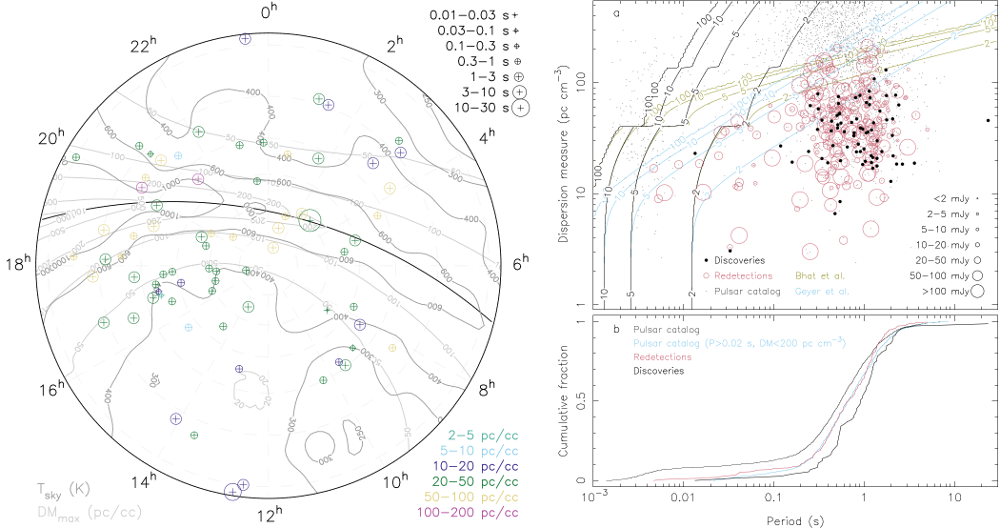Daily Image
25-07-2019New pulsars discovered with LOFAR
| Submitter: | Cees Bassa |
| Description: | With the LOFAR Tied-Array All-Sky Survey (LOTAAS) we are covering the entire Northern sky with tied-array beams from the Superterp, searching for pulsars and fast transients in 1 hour observations at a central frequency of 135 MHz with 32 MHz of bandwidth. Thanks to LOFAR's unique beamforming capabilities, a single observation covers 12 square degrees with 219 coherently added tied-array beams, and 67 square degrees with three incoherently added beams. In Sanidas et al. (2019, A&A 626, A104), we present an overview of the survey and the initial pulsar discoveries. To date, LOTAAS has discovered 73 new radio pulsars. The figure on the left shows their sky locations, spin periods and dispersion measures (DMs). These discoveries include the slowest radio pulsar known, spinning once every 23.5 seconds, and two binary millisecond pulsars (with 13 and 33 millisecond spin periods). The survey has also redetected 311 known pulsars, which we use to validate the survey sensitivity. As expected and shown in the top panel of the righthand figure, the LOTAAS survey is limited by interstellar scattering, where scattering washes out the periodic signals of pulsars with short spin periods and/or high dispersion measures. We find that, on average, LOTAAS pulsar discoveries have longer spin periods than the known pulsar population (bottom right panel). It is as yet unclear if this is due to selection biases or due to intrinsic properties of slower-spinning radio pulsars visible at low observing frequencies. |
| Copyright: | Cees Bassa on behalf of the LOTAAS collaboration |
| Tweet |  |
